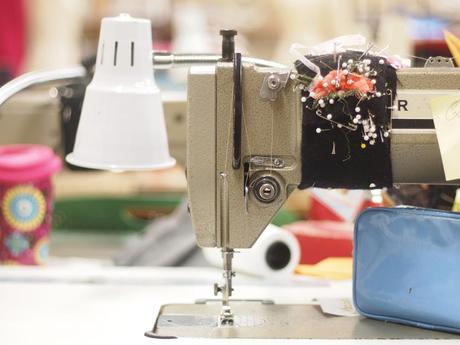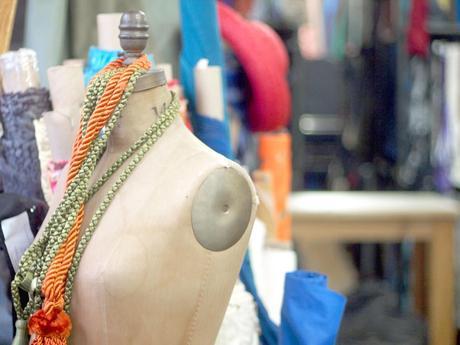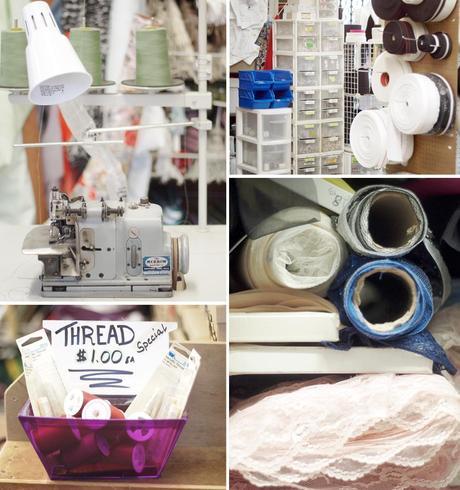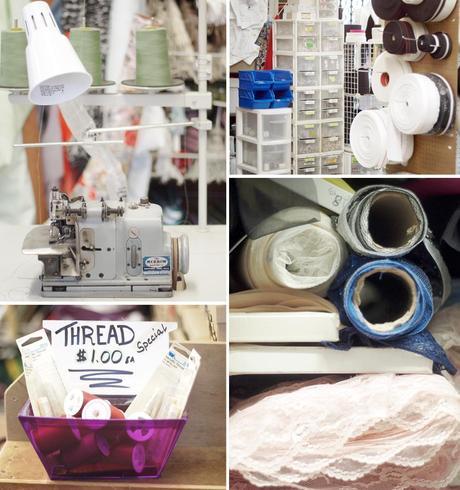Because of Instagram and the iPhone, everyone is a photographer and everyone is a lazy photographer. A photograph with the perfect composition, like this I am running the risk of sounding cliche again - just like I did when I published my tips for sewing bloggers - but I think that the way seamstresses photograph is different from fashion, food, and mommy bloggers. Sure, in some ways we're similar but our differences are great enough that it's worth calling out. I'm not going to talk about ISO, shutter speed, or aperture because quite frankly and honestly, I don't know much about the technical aspects of photography - I spend a lot of time on YouTube watching tutorials. This post is more about the philosophy of photography when it comes to sewing and it has helped me when I'm taking pictures. Because of Instagram and the iPhone, everyone is a photographer and everyone is a lazy photographers. A photograph with the perfect composition, like Henri Cartier Bresson's">one by Henri Cartier Bresson, is no longer sought after and anything goes. Shots of what we’re eating, where we are, and selfies are okay. I’m not saying photography has taken a turn for the worst – it’s simply taken a turn and a sharp one. There’s another dimension to photography now that is similar to taking photos while traveling. When I visit home, New York, or wherever, I capture the little details – the barista at Starbucks, my shoes, the airport, my hair dryer lying on the floor. All are boring photos but each tell a snippet of the story of my trip. I think of each photo as a post card telling me where I was at that particular moment so when I look back on them a month, a year, or two years later, the memory is vivid.
Yes, Valerie and Brandy create gorgeous photos of my projects but you don’t have to have professional photos to document a project. In addition to the photos Valerie takes, it’s important for me, and I hope you too, to take photos of the project along the way. My muslins, the presser foot, the thread, the three quarters finished garment – all can be shot from varying angles and light, they can even be crappy quality, because that’s not what matters. What matters is that it tells the story of the garment when you’re thirty, forty, or sixty-years-old. Also, these are the shots that your readers want to see. They want to know that you go through bumps and turns and experience obstacles throughout the course of a project because you know what, they do too!

This relates to the previous tip but looking at the gestalt, or the whole/sum of the parts, is important. When I took figure drawing at SCAD, I was not allowed to stand closer than arms distance to the easel. Why? The professor said that students concentrate too much on drawing the eyes, the mouth, the neck, and the chin perfectly that they forget to step back and look at the whole picture. Does it even look like a person? Most likely, if the student was drawing a few inches way from the easel, the figure looked like a martian, or Bill O’Reilly. So when I’m taking photographs of the details of a project, I step back and think about the whole story I’m telling. I want to capture the first fit, second fit, and third fit and I don’t want to leave out part in the story because if I do, it will be fragmented and incomplete.


To create a story, lots and lots of photos must be taken. When Valerie, Brandy, and I collaborate, hundreds, and I mean hundreds, of photos are taken. From the front, from the side, with Valerie’s camera, with my camera, and with our iPhones – all of us shoot all the time. We take impromptu shots and posed shots. We just shoot! After, and over the course of several weeks, we edit, choosing the photos that we like the most, that capture the garments best, and the photos that highlight the details of the garment beautifully. If a story is to be told, how many chapters do you want it to be? In my opinion, when it comes to fashion, there can never be enough. So just shoot! You can edit later.








